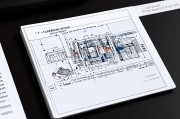本文目录导读:
- Introduction
- What Is a 5-Point Rating Scale?
- Common Variations of the 5-Point Scale
- Advantages of Using a 5-Point Rating Scale
- Applications in Different Fields
- Potential Challenges and How to Overcome Them
- Best Practices for Designing a 5-Point Scale
- Conclusion
Introduction
Rating scales are widely used in surveys, evaluations, and feedback systems to measure opinions, satisfaction, or performance. Among the most common is the 5-point rating scale, which provides a balanced range of responses from highly negative to highly positive. In this article, we will explore the structure, applications, and advantages of the 5-point rating scale in English, along with examples of its usage in different contexts.
What Is a 5-Point Rating Scale?
A 5-point rating scale is a Likert-type scale that allows respondents to express their level of agreement, satisfaction, or frequency using five distinct options. The scale typically ranges from the lowest to the highest rating, often labeled as follows:
- Strongly Disagree / Very Poor / Never
- Disagree / Poor / Rarely
- Neutral / Average / Sometimes
- Agree / Good / Often
- Strongly Agree / Excellent / Always
This structure ensures a balanced assessment while avoiding the ambiguity of scales with too few or too many options.
Common Variations of the 5-Point Scale
Depending on the context, the labels may vary while maintaining the same numerical structure. Here are some common variations:
Agreement Scale (Likert Scale)
Used in surveys to measure opinions:
- 1 – Strongly Disagree
- 2 – Disagree
- 3 – Neutral
- 4 – Agree
- 5 – Strongly Agree
Performance or Quality Scale
Used in customer feedback or employee evaluations:
- 1 – Very Poor
- 2 – Poor
- 3 – Average
- 4 – Good
- 5 – Excellent
Frequency Scale
Used to assess how often something occurs:
- 1 – Never
- 2 – Rarely
- 3 – Sometimes
- 4 – Often
- 5 – Always
Each variation serves a different purpose but follows the same 5-level structure for consistency.
Advantages of Using a 5-Point Rating Scale
The 5-point scale is popular because it offers several benefits:
- Balanced Response Options – Unlike a 3-point scale (which may lack nuance) or a 10-point scale (which can be overwhelming), the 5-point scale provides just enough granularity without confusing respondents.
- Easy to Understand – The labels are straightforward, making it accessible to a wide audience.
- Statistical Reliability – The midpoint (3) allows neutral responses, reducing forced choices that could skew data.
- Versatility – It can be adapted for various industries, including education, healthcare, business, and market research.
- Ease of Analysis – Data from a 5-point scale can be easily quantified and compared using statistical methods.
Applications in Different Fields
Education
Teachers and institutions use 5-point scales to evaluate student performance, course effectiveness, and teaching methods. Example:
- 1 – Needs Improvement
- 2 – Below Average
- 3 – Meets Expectations
- 4 – Above Average
- 5 – Outstanding
Customer Satisfaction Surveys
Businesses use 5-point scales to measure customer experience, product satisfaction, and service quality. Example:
- 1 – Very Dissatisfied
- 2 – Dissatisfied
- 3 – Neutral
- 4 – Satisfied
- 5 – Very Satisfied
Employee Performance Reviews
HR departments assess employees using structured 5-point scales to ensure fair evaluations. Example:
- 1 – Unsatisfactory
- 2 – Needs Improvement
- 3 – Meets Expectations
- 4 – Exceeds Expectations
- 5 – Outstanding
Healthcare and Patient Feedback
Hospitals and clinics use 5-point scales to gather patient feedback on treatment, staff behavior, and facility conditions. Example:
- 1 – Very Poor
- 2 – Poor
- 3 – Fair
- 4 – Good
- 5 – Excellent
Potential Challenges and How to Overcome Them
While the 5-point scale is effective, some challenges may arise:
-
Central Tendency Bias – Respondents may avoid extreme ratings (1 or 5) and cluster around the middle (3).
- Solution: Use clear, descriptive labels to differentiate between options.
-
Cultural Differences – Some cultures may be more inclined to choose neutral or positive responses.
- Solution: Adjust wording based on the target audience.
-
Overuse of Neutral Option – If too many respondents select "Neutral," the data may lack meaningful insights.
- Solution: Encourage honest feedback by ensuring anonymity.
Best Practices for Designing a 5-Point Scale
To maximize effectiveness:
- Use Clear and Consistent Labels – Avoid vague terms like "Okay" or "Fine."
- Keep It Simple – Stick to one dimension (e.g., agreement, frequency, or quality).
- Avoid Forced Choices – Allow a "Not Applicable" option if needed.
- Test Before Implementation – Pilot the survey to ensure respondents understand the scale.
Conclusion
The 5-point rating scale is a powerful tool for gathering structured feedback across various fields. Its simplicity, reliability, and adaptability make it a preferred choice for researchers, businesses, and educators. By understanding its structure, applications, and best practices, organizations can effectively measure opinions, performance, and satisfaction with precision.
Whether you're conducting a survey, evaluating employees, or assessing customer experiences, the 5-point scale in English provides a balanced and insightful approach to data collection.
Word Count: 913









